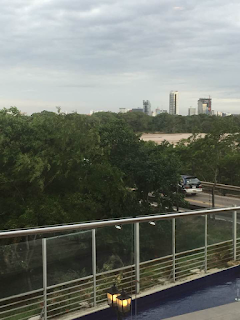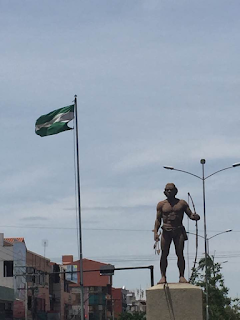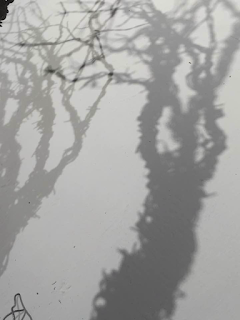The Santa Cruz Cemetery
I know a lot of people freak out thinking of a
cemetery. I guess it is all the horror
movies that abound today and the ridiculous idea that there are zombies. In fact, cemeteries are often some of the
most beautiful and peaceful parks that a city has.
When I was in college I dated a girl who told me she liked to take pictures of cemeteries. I
thought that was strange, until I went with her one Saturday afternoon. We visited several of the small cemeteries in
the Duncanville and Cedar Hill area. They were simple places, mostly grass and
tombstones. But there were patches of
flowers, lovingly planed there by families, or a bouquet left on a grave. Sometimes you’d see pictures or flags. It wasn’t scary at all.
Since then I have been visiting cemeteries in some of the
places I have visited. They often speak
of the culture of the place that someone from the outside never really
sees. In Romania, the Merry Cemetery in
Sapanta, showed the joy of life that they have in that place.
In Santa Cruz, family is so important. I remember once teaching a class of 7th
and 8th graders in the 80s.
It was half American/Canadian and half Bolivian. When asked what is more important, family or
friends, every one of the American said friends and every one of the Bolivians
said family. That is what they feel
here. They love their families. If you manage to become a close friend, you
will be like family to them.
So I introduce you to one of the loveliest parks in Santa
Cruz. It is so quiet here. Amazingly it is on the First Ring, one of the
busiest roads in Santa Cruz. Yet you
feel like you have entered a special cave where the sounds of the city have
been blocked. You can hear your own
footsteps and the dripping of the rain.
The people who work here, cleaning and repairing, whisper.
At times you will see a family visiting one of the
tombs. They arrive with things to clean
what needs to be cleaned. They will
replace flowers. You see the smiles on
their faces. They love the people that
are here. I have met many here with a
deep religious fervor. I know they are
expecting to meet their loved ones one day.
This is the hope I have.
This is one of the reasons I am a Christian. This world is not my home, only a temporary
stopping place.
“Listen, I tell you a mystery: We will not all sleep, but we
will all be changed. In a flash, in the
twinkling of an eye, at the last trumpet!
For the trumpet will sound, the dead will be raised imperishable, and we
will be changed.” 1 Corinthians 15:1, 2.





















































